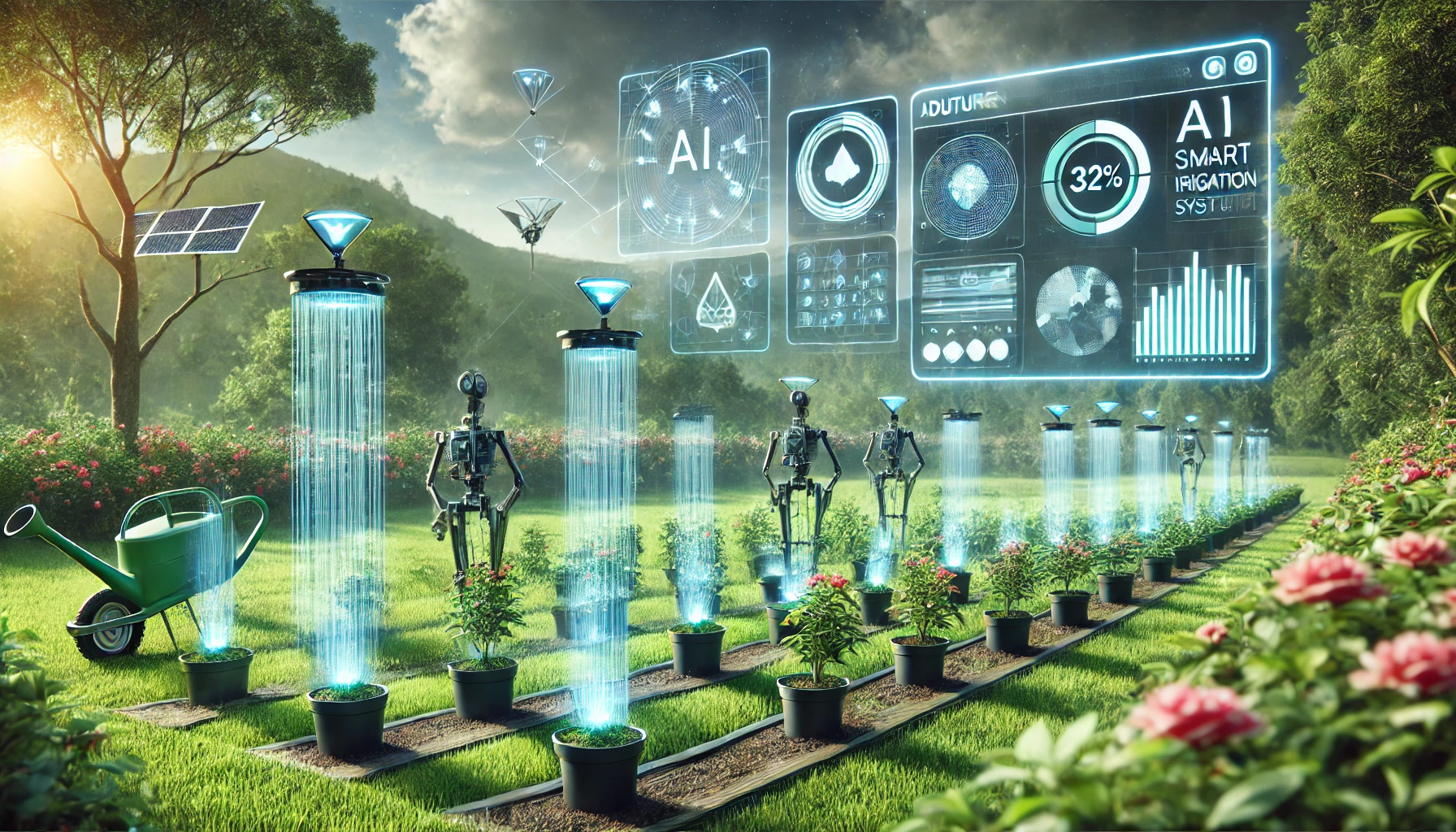Water is one of the most critical resources in gardening and agriculture, yet it is often misused or wasted due to inefficient irrigation practices. Traditional watering methods, such as manual watering or timed sprinklers, often result in overwatering, runoff, and evaporation, leading to water scarcity and soil degradation.
With Artificial Intelligence (AI) and smart irrigation technology, gardeners and farmers can now use water more efficiently, ensuring that plants receive the exact amount of water they need, at the right time, without waste. AI-driven irrigation systems monitor soil moisture, weather conditions, and plant health, making real-time adjustments to optimize water conservation and plant growth.
In this article, we will explore how AI-powered smart irrigation is revolutionizing gardening, the best automated watering systems, and how these innovations are helping conserve water while improving plant health.
1. The Problem with Traditional Irrigation
Traditional irrigation methods can lead to significant water waste and inefficiency. Some of the most common problems include:
1.1. Overwatering
Many gardeners and farmers apply more water than plants actually need, leading to waste, soil erosion, and increased fungal growth.
1.2. Lack of Climate-Based Adjustments
Conventional irrigation systems do not consider weather forecasts or environmental conditions. This means watering may occur right before rainfall or at temperatures that are not optimal for absorption.
1.3. Evaporation and Runoff
When water is applied inefficiently, much of it evaporates before being absorbed or runs off the surface, carrying away essential nutrients.
1.4. High Maintenance and Inefficiency
Traditional irrigation systems require constant manual adjustments and frequent maintenance due to water waste and system inefficiencies.
2. How AI is Transforming Smart Irrigation
With AI, smart irrigation becomes an automated, precise, and adaptable process. Here’s how technology is revolutionizing the way we water plants.
2.1. AI-Powered Soil Moisture Sensors
Soil sensors use AI to monitor moisture levels in real time, adjusting irrigation as needed.
Examples include Xiaomi MiFlora, which measures moisture, sunlight, and temperature, and Teralytic AI Soil Sensor, which tracks pH, nutrition, and moisture levels.
2.2. Smart Climate Analysis
AI analyzes weather forecasts to prevent watering before rainfall, reducing unnecessary water use.
2.3. Automation and Machine Learning
Irrigation systems equipped with machine learning analyze seasonal patterns and automatically adjust when and how much water to apply to plants.
2.4. Control via Apps and IoT
With connected apps, farmers and gardeners can monitor and control their irrigation systems remotely, receiving alerts when plants need water.
Popular AI irrigation apps include Rachio 3 Smart Sprinkler, which adjusts irrigation based on the weather, and Rain Bird ST8I-WIFI, which optimizes watering schedules using AI.
3. Benefits of AI-Powered Smart Irrigation
3.1. Water Conservation
Smart irrigation can reduce water usage by up to 50%, ensuring every drop is used efficiently.
3.2. Improved Plant Health
By delivering exactly the right amount of water, AI prevents drought stress, fungal diseases, and root rot.
3.3. Cost Savings
Less water waste means lower utility bills. Additionally, optimizing fertilizer use reduces overall costs.
3.4. Environmental Sustainability
Reduced water consumption, less fertilizer runoff, and better resource management make smart irrigation a sustainable alternative for the environment.
4. Real-World Applications of AI in Irrigation
4.1. Smart Farming in Silicon Valley
The startup Iron Ox, based in Silicon Valley, uses AI-equipped greenhouses to monitor and irrigate plants autonomously, reducing water use by 90%.
4.2. AI-Powered Vineyard Management in California
Vineyards in California have adopted AI soil sensors to monitor moisture levels and reduce irrigation, saving millions of liters of water annually.
4.3. Urban Farming Projects in Singapore
In Singapore, where agricultural space is limited, vertical farms use AI-powered smart irrigation to provide plants with the exact amount of water they need.
5. How to Set Up a Smart Irrigation System at Home
Step 1: Choose a Smart Irrigation System
Decide between sprinklers, drip irrigation, or hydroponics, depending on the available space.
Step 2: Install Soil and Climate Sensors
Moisture sensors help measure soil hydration levels and prevent waste.
Step 3: Connect a Smart Irrigation Controller
Controllers like Rachio 3 or Orbit B-Hyve automatically adjust watering schedules based on AI analysis.
Step 4: Use an App for Monitoring and Optimization
Connected apps allow gardeners to track plant needs remotely and adjust irrigation times accordingly.
6. The Future of AI in Smart Irrigation
6.1. Fully Autonomous Irrigation
In the future, AI will control irrigation, fertilization, and plant nutrition with no human intervention.
6.2. Advanced Weather Prediction
With improved algorithms, AI-generated weather forecasts will become even more precise, optimizing water usage further.
6.3. AI Drones and Robots for Water Monitoring
AI-powered drones will analyze large agricultural areas, ensuring even water distribution across fields.
Conclusion: Smart Irrigation is Transforming Gardening
With advancements in AI, smart irrigation has become an accessible and efficient solution to conserve water, reduce costs, and improve plant health. Whether in small home gardens or large-scale farms, automation and smart sensors are revolutionizing the way we use water.
If you want a more efficient and sustainable gardening experience, now is the time to invest in smart irrigation and take advantage of AI technology to improve your garden or farm! 🚀💧🌿

